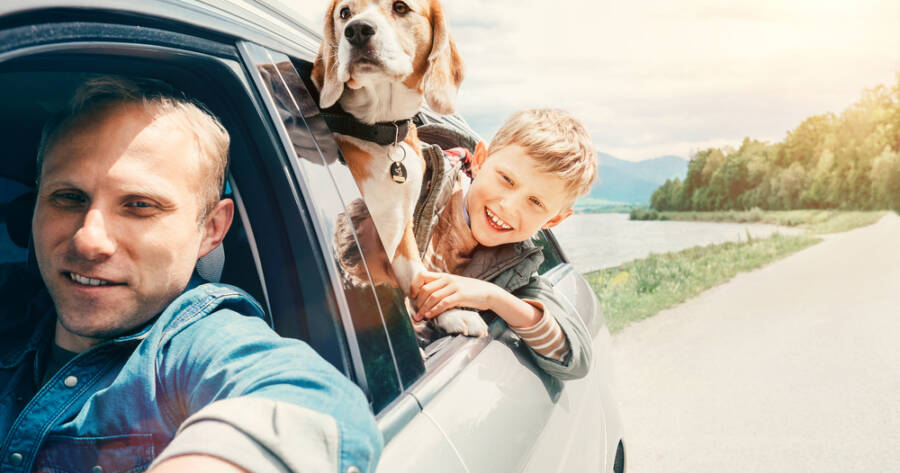Traveling can be an exciting adventure, but when it involves pets, it adds extra layers of complexity, especially if your furry friend experiences travel anxiety. A well-planned approach to managing this anxiety can transform these journeys from stressful experiences into enjoyable adventures. Learn how to recognize and alleviate travel stress in pets, ensuring that both you and your pets can look forward to exploring the world together comfortably and happily.
Recognizing Travel Anxiety in Pets
Travel anxiety in pets can manifest in various ways, from mild discomfort to severe distress. Common signs may include excessive panting, drooling, vocalizing, restlessness, or even more extreme behaviors such as attempts to escape or hide. Understanding these signs is crucial as it enables owners to tailor their approach to each pet’s specific needs.
Recognizing anxiety is the first step towards implementing strategies that can make your pet feel more at ease. As each pet will display different symptoms, keeping a close eye on their behavior before, during, and after travel is vital. Establishing a baseline of what’s normal for your pet is also helpful to better identify any changes.
Preparing for the Journey Ahead
Preparation is a cornerstone of reducing travel anxiety. Gradual acclimatization to travel is key; starting with small trips and slowly increasing duration can help pets become accustomed to the experience. Make these trips positive experiences by associating them with rewards or comfort, slowly building your pet’s confidence in the travel process.
A familiar environment can sometimes help reduce anxiety. Keeping a pet’s favorite blanket or toy in the carrier may provide a sense of security. Additionally, ensuring that the carrier itself is introduced well before travel and associated with positive experiences might ease discomfort.
Travel Essentials for Comfort and Safety
Having the right travel gear can play a significant role in managing anxiety. Adequate carriers or seats that are both comfortable and secure are necessary to prevent injury and to promote ease during transit. The importance of ensuring the carrier is well-ventilated and spacious enough for movement cannot be understated.
Access to food and water is crucial, but exercise caution to prevent overfeeding just before travel, which might lead to nausea. Instead, plan regular stops for bathroom breaks and stretches, where possible, ensuring your pet has access to essentials without overburdening their digestive system.
Techniques for Anxiety Reduction
Anxiety reduction techniques can differ drastically among pets, but a mix of behavior modifications and environmental changes might offer relief. Soothing music or calming scents, such as lavender, may create a more calming environment for anxious pets. These should be introduced gradually alongside positive reinforcement to associate them with a peaceful state.
For some pets, tools like anxiety wraps or specialized calming vests could potentially offer relief by applying gentle, constant pressure similar to swaddling an infant. Always ensure proper fit and comfort when trying such methods, as incorrect application could inadvertently add to stress.
Consult with a Veterinarian
Veterinary advice is invaluable when considering how best to manage a pet’s travel anxiety. Professionals might suggest a variety of solutions, ranging from over-the-counter calming products to prescription options when necessary. Veterinary professionals can also recommend training techniques or refer you to animal behaviorists if more intensive intervention is needed.
It is essential to openly discuss with your vet about any previous attempts and outcomes, ensuring they have a comprehensive view of what has been tried in order to provide precise guidance. Tailoring advice to your pet’s specific history and conditions can lead to more effective strategies.
Post-Travel Adjustments
Post-travel observation is vital, as signs of travel-induced stress might not surface until after the journey. Monitoring your pet for any lingering anxiety or other behaviors can highlight if the chosen strategies were effective. Providing a calm and familiar homecoming environment, coupled with time and attention, can help ease your pet back into routine.
Remember, adapting to travel is a learning process for both you and your pet. Evaluating each journey can inform adjustments for future trips, making each expedition a better experience based on learned preferences and responses.
Learn More Today!
Traveling with a pet can be a rewarding endeavor with the potential for memorable experiences and bonding opportunities. By remaining attentive to the unique needs of pets, recognizing signs of anxiety, and implementing strategies to mitigate stress, pets and their owners can enjoy journeying together.
Whether it’s through gradual exposure, implementing travel comfort strategies, or seeking veterinary guidance, travel can evolve into a pleasurable experience for all involved. By embracing a patient and observant approach, each journey can bring about improved ease and enthusiasm for exploring the world with your cherished companion.

